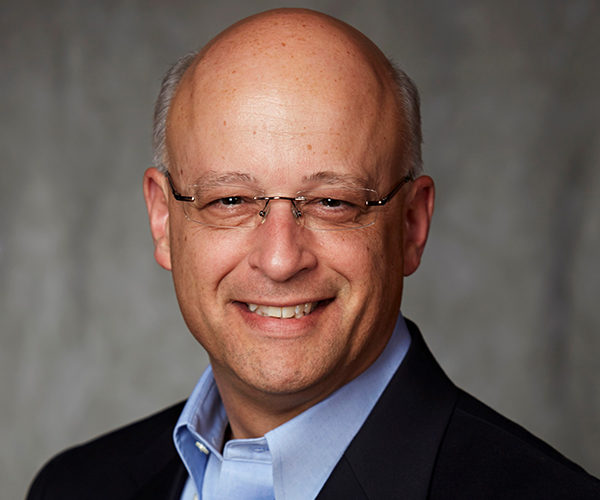Living—and leading—in interesting times: interview with Mark Baxa
Mark Baxa has taken the reins of the Council of Supply Chain Management Professionals. Now, he faces the ultimate leadership challenge: helping members navigate a world in which the old rules no longer apply.

Mark Baxa has been a leader in supply chain throughout his career, so he was a natural choice to lead one of the industry’s most respected organizations—the Council of Supply Chain Management Professionals, or CSCMP.
Baxa assumed the role of interim president and CEO in March of this year upon the retirement of long-time CEO Rick Blasgen. His ascension comes at a critical time for the organization and for the industry as a whole, as it emerges from a pandemic into a market where demand for logistics services far outstrips available capacity.
Baxa brings many years of experience to the role, having been a member of CSCMP since 1998 and having served as chairman of the association’s board. In his day job, he is the founder, president, and CEO of FerniaCreek LLC, a global supply chain consulting group based in St. Louis and Jefferson City, Missouri. Prior to beginning his consultancy, Baxa worked for 37 years across the Upjohn, Empresas La Moderna, and Monsanto/Bayer companies, where he served in leadership roles in product management, logistics, global trade operations and compliance, strategic sourcing, supplier relationship management, supplier diversity, and sustainability.
Baxa recently spoke to DC Velocity Group Editorial Director David Maloney about his role at CSCMP, the state of the industry, and the organization’s initiatives as the world continues to emerge from the pandemic.
Q: How would you describe your current role at CSCMP?
A: My number-one job is to carry out the mission of the organization. My first and foremost priority is providing value to our members and ensuring that we continue to add the right kind of programming and educational content to help supply chain professionals develop in their current roles and throughout their careers. That is the primary mission of CSCMP. Everyone here—the leadership team, the staff, and our volunteers—is focused on that.
The second priority is to focus on the sustainability and viability of CSCMP. We are a very strong organization from the standpoint of the mission at hand and the organization’s appeal to our members. In fact, our membership continues to increase daily. We’ve made a commitment to those members to provide the best content, information, and networking opportunities we can. But it takes investment to do the things we do, so our challenge is to make sure we not only produce the best content but also price it fairly and equitably for the marketplace.
Q: What do you see as the role of CSCMP within the supply chain world?
A: We’ve long been focused on the importance of strong supply chain leadership and the value supply chain professionals can bring to the companies they work for. So I see our role as enabling those supply chain professionals to do even more than they can today through our product offerings and educational opportunities.
We also connect professionals with professionals. This is across academia as well as industry practitioners. People want to know how things work when they consider alternative solutions to their problems. They want to interact with others who have been there before. The author John Maxwell said it best: “If you want to know what is on the road ahead, ask somebody on the way back.”
In our organization, with over 9,000 members and growing, there are many opportunities for people to connect with each other, whether it’s at the annual EDGE conference, a simple referral from our office to others, or through our local roundtables, which host many events throughout the year. CSCMP provides educational and networking access to supply chain professionals around the world.
Q: What is the organization planning for the coming year?
A: We have new products that are in play right now as well as some that we’re currently developing and will roll out throughout the year. We never stop inventing or creating new ways to talk about innovative practices in supply chain, helping supply chain professionals understand the bottlenecks that occur and possible ways to alleviate them. We are continually upgrading our existing content, such as our webcasts and Quick Courses.
Q: The pandemic put a spotlight on the value of supply chain. What challenges does the industry face now?
A: We are certainly in a place where we face significant complexity but also the opportunity to innovate. Let’s go back a couple of years prior to the onset of Covid, when the geopolitical shift became problematic for many supply chains around the world. The resulting disrupters, such as new tariffs, affected companies that sourced goods in China. Then along came a pandemic that exposed both the need for redundancy and for better supply chain resiliency planning.
As the economy rebounds, we are finding that everybody is faced with a challenge of one kind or another, be it e-commerce or manufacturing. The ability to move raw materials and finished goods is seriously constrained by a shortage of transportation capacity, not just in the U.S. but worldwide.
We are also seeing a talent shift. People are moving from one company to another, seeking new opportunities. The demand for supply chain professionals has never been greater. That will probably continue in perpetuity.
The other part is the redesign of networks. Supply chains got a rude awakening when they realized that not only could their suppliers not supply the raw materials they needed, but also that those suppliers had issues with their own suppliers. We simply didn’t know enough about the risks involved in those supply chains and the consequences should something happen. Sourcing and procurement professionals have to find a different way of gaining insights and visibility into their suppliers’ extended supply chains.
Q: What advice are you giving your members as we emerge from the pandemic?
A: I wouldn’t say that we give direct advice; we come at it from more of a consultancy perspective. What we are doing to support members throughout all of this is to offer them access to all of our resources and the products we have developed so they can enhance their knowledge of supply chain best practices. The hope is that they can translate that knowledge into actions they can take to help solve problems for their companies.
Q: Obviously, there is a lot of change taking place right now in the supply chain—both in terms of adjusting to pandemic-fueled disruptions and also looking toward the future. How do you as an industry association help your members adapt to an uncertain environment?
A: It is through conversation. It is listening to their concerns and connecting them with individuals they can network with and giving them access to our content to help them solve their problems.
That includes connecting them with our partners who work with us—our sponsors as well as our exhibitors, in the case of the Supply Chain Exchange at the upcoming EDGE conference. We want to connect executives with companies that can offer them solutions to their supply chain challenges.
Q: The upcoming EDGE conference will be one of the first live events in the industry since the pandemic began. What can attendees expect from this year’s event?
A: We are all very excited about returning to a live event because we, as supply chain professionals, really, really enjoy coming together to connect, exchange ideas and best practices, and validate what we’ve all been experiencing in the two years since we last came together in Anaheim. I am excited to see that happen.
In terms of the event itself, we are going to bring the very best practitioners and academics to the conference, just as we always have. I think you’re going to be really pleased when you see who we’re bringing in this year as track speakers and keynote speakers. I also couldn’t be more excited with who is going to be exhibiting at the Supply Chain Exchange. You’ve got to be there to see it.
Related Articles

Copyright ©2024. All Rights ReservedDesign, CMS, Hosting & Web Development :: ePublishing